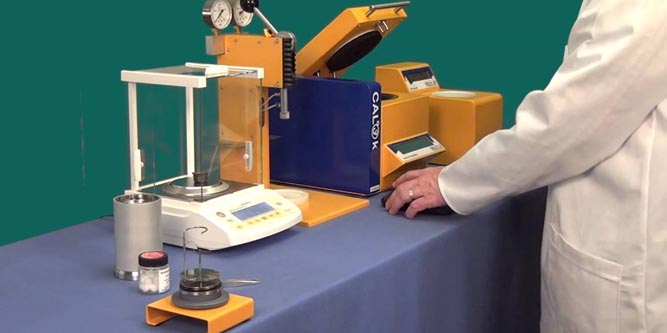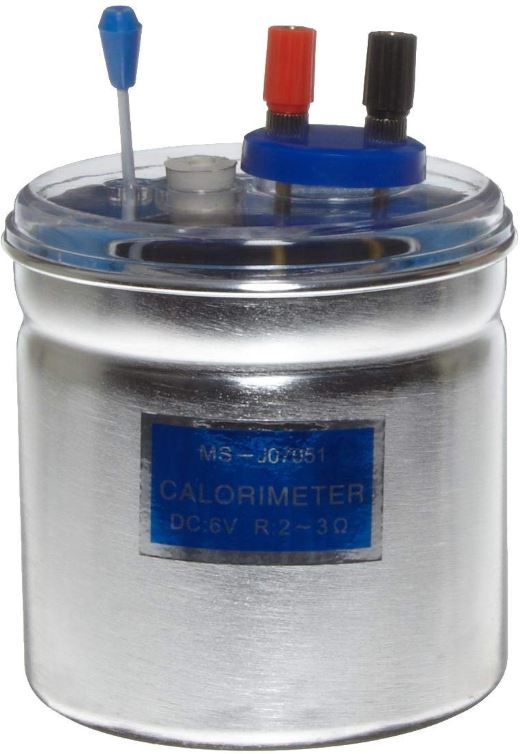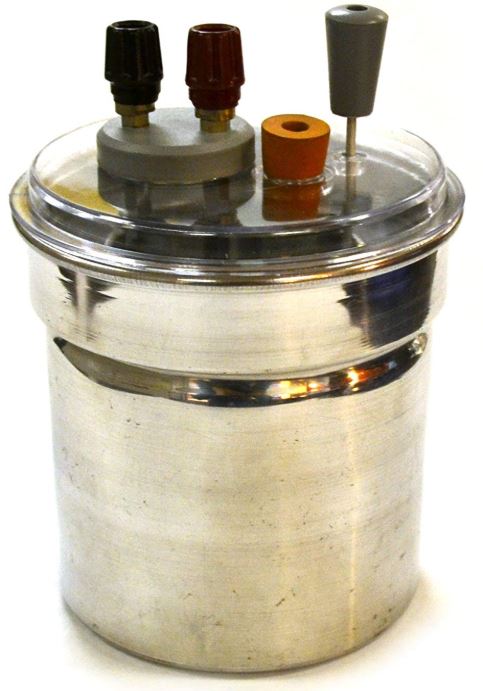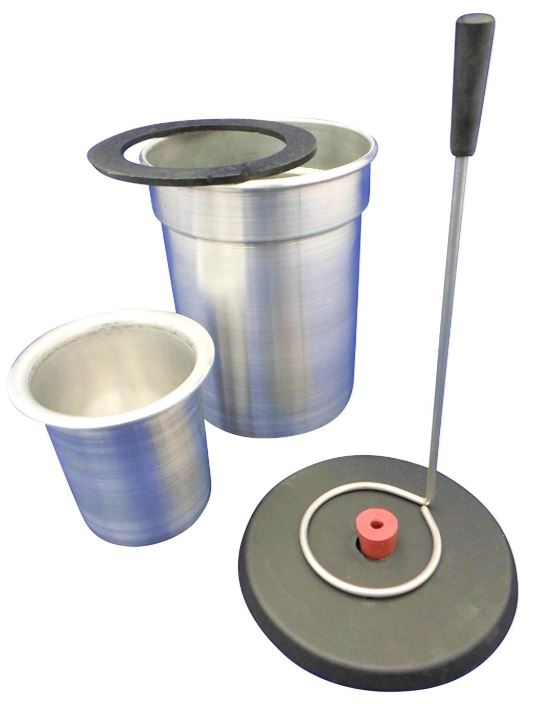Testing heat can be dangerous. It can also be one of the best ways for students to gain insight into the thermal processes and properties of the world around them. And naturally, laboratories often need to measure the thermal properties of a substance.
Whether for routine testing, educational interests, or for scientific pursuits, a good calorimeter is a staple of many lab environments. But what is a good calorimeter, exactly?
Selecting the Right Calorimeter
In many ways, choosing a calorimeter is quite similar to choosing any other instrument. You’re going to have to think about the specific types of testing you want to do, and the parameters necessary for those tests. You’re going to have to think about the build of the instrument, including the required throughput you have for various samples.
And naturally, ease of use is going to come into play. Whether these instruments are used by inexperienced students or experienced technicians is just the beginning. You’ll also be concerned with looking for features in the design that are specific to educational pursuits. For example, transparent equipment for close monitoring of various chemical reactions occurring within the calorimeter.
Precision
You can start by thinking about precision. How big are the samples you’re working with? How much space do you have in the lab? How much accuracy do you need from your results? For some types of calorimeters, precision is measured in reference to one gram of Benzoic Acid, i.e. 34 Btu/lb. But for more basic calorimeters, you’re going to be concerned more with sample capacity, and the quality of the construction.
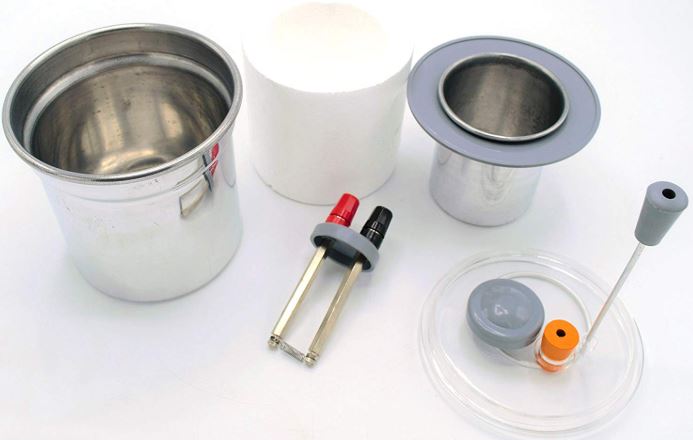
Workload
Moving right along to workload. One calorimeter may be equipped to handle a huge volume of samples. You might be able to operate several distinct calorimeters through the same channels. And consequently, you can get far more testing done. This can generally be measured as the operator time per test for an instrument.
Another calorimeter may be restricted to individual samples and testing. You’ll also need to fill and rinse the instrument each time, a sort of repetitive action which is useful for testing smaller quantities of samples. But for smaller scale testing or educational use, these basic single sample calorimeters are better suited to the task.
Type of Analysis
An ordinary calorimeter is useful for measuring chemical reactions, physical changes, and heat capacity. You can find dozen different types of calorimeters, each with a unique approach to measurement. Some types of analysis provide more precision in your results through granting more control of each component of the system.
One of the most common is a reaction calorimeter, which involves initiating a chemical reaction within closed container. The reaction produces heat, and the total heat output is measured against time. That helps explore relationships between thermal energy and liquid. Another common type is a heat flow calorimeter, making use of a water jacket to keep your sample in a fixed temperature.
Calorimeters for food are another animal entirely. They involve the release of an oxygen bomb, offering analysis for combustible products. Bombs are chosen on the basis of sample size and the construction of the alloy. A. For sample sizes of up to 2,400 calories, other bombs burn quickly, drawing up to 12,000 calories from an oxygen charge.
Budget
And it’s hard to forget budget constraints are always a consideration. Fortunately, a reaction calorimeter is generally an inexpensive instrument. It’s only when you start looking for specific testing options, like the ability to burn food, that you’re going to need a specialized instrument. You can often expect the price per unit to be lower than $20 for a fairly high quality learning calorimeter.
Build
The build quality of your instruments is always going to be a concern. But that’s particularly true when it comes to instruments which handle heat reactions, caustic chemicals, and mechanical equipment. In the case of calorimeters, you’re going to want to be assured the construction isn’t just adequate for measurement, but will hold up under the types of testing you want to do.
With a reaction calorimeter, you’re almost always going to get better results from a double wall design. The second wall acts as an insulator to prevent the escape of heat. A rubber stopper can be used to inert thermometer and temperature probes when needed.
These additions are often included with instruments that require them, but you may want to check how easy it is to replace these individual components should one be lost or damaged. This is where things like brand reputation come into play. Some brands try to hook you into brand-specific sizes and then charge extra for their replacement equipment. These kind of details are easy to overlook if you don’t know how to avoid unscrupulous brands.
GSC International Electric Calorimeter
The GSC International Electric Calorimeter is a fairly basic reaction calorimeter, which works by measuring the heat produced or absorbed by some type of chemical reaction. It’s a staple instrument for measuring an electrical equivalent to heat. And this particular calorimeter is ideal for educational purposes and classroom settings, both with respect to its accuracy and its cost.
Build & Design
The GSC International Electric Calorimeter is about small enough to shove in your pocket, or store in a single box with dozens of identical units. It’s got a simple circular build, with a small 4” diameter paired against a 7” height. That height figure includes the accommodating instruments for stirring and probing temperature. With those removed, the height falls much closer to 5”, and makes this calorimeter much more pleasant for easy storage.
Additionally, the GSC International Electric Calorimeter provides 10-minute testing through its 6-volt design. This kind of single-sample throughput isn’t going to cut it for an industrial lab, but it’s perfect for students who are trying to get a closer look at the thermal characteristics of a sample. The control handles on the top of the device are insulated for comfortable and safe use, and this instrument includes a stirrer and single-hole rubber stopper to keep heat inside.
Other Considerations
The cover of the GSC International Electric Calorimeter is supported by a mounted heating coil, providing 1.5 ohms of resistance given a standard binding post. Additionally, the instrument is built with supporting posts and coil to help prevent electrolysis of the sample. Anyone working around direct current involved in a chemical reaction for their sample should take note.
In short, you might use this in a chemistry class for finding the heat of various metals. But this isn’t a bomb calorimeter for food testing. And it uses a single wall design which isn’t going to provide the right environment for every type of test. It’s rather specific in its electrical capacities, and the slightly larger than normal size is largely attributable to its educational orientation.
EISCO Premium Double Wall Calorimeter
Eisco Labs isn’t a household name, but they manufacturer a variety of educationally-oriented lab equipment. From biology to chemistry, from lab ware to industrial equipment, they produce it all. What distinguishes their tester from a simpler calorimeter is its double wall design. And within the calorimeter itself, Eisco has granted their calorimeter a generous 150mL capacity for testing larger samples.
Build & Design
Its outer wall stands 4” tall, with a 4” diameter. The inner wall measures 2.5” tall, with a 2.5” diameter. The EISCO Premium Double Wall calorimeter’s 150mL capacity won’t leave you wanting for sample size, and with a standard 3-6V DC plug, it runs at only 5 watts. The outer wall is composed of aluminum for thermal conductivity.
With the lid tucked over your sample, the top of the calorimeter accepts the heating element, thermometer cork, and a stirrer. These provide all the essential tools you need for either educational or practical analysis of a sample. Like the American Educational calorimeter, this calorimeter uses a removable spring heating element which makes regular maintenance of the instrument exceptionally easy.
Other Considerations
Within the tester, the plastic insulator ring and Styrofoam lining work in conjunction to prevent the escape of heat. In other words, they work to retain the accuracy of your results. The lid on the Eisco Premium Double Wall Calorimeter accepts the heating element. And all the miniature tools you need for measurement come with this calorimeter, including the stirrer, thermometer cork, and cover cap.
Ajax Scientific Double Wall Calorimeter
Ajax Scientific is another rather common and widely regarded supplier of educational products. Whether you’re studying light, heat, magnetism, or ecology, Ajax has the instruments for the task. And their calorimeters meet the same rigorous standards they apply to all their scientific instrument designs.
Build & Design
The Ajax Scientific Double Wall calorimeter has a highly compact 2.5” depth, paired with an equally small 3.1” height. The outer measurements are the same as the inner measurements, keeping confusion to a minimum. The entire kit weighs 10.4 ounces. And the double wall design is great for determining the specific heat fusion, heat of vaporization, and total heat from a sample.
The Ajax Scientific Double Wall Calorimeter includes a plastic ring which can help with seating the inner calorimeter. Two polished spun aluminum vessels work to keep sample accuracy to a maximum, and cleaning hassle to a minimum. When it comes time for cleaning, quickly disassembling each portion of this calorimeter only takes seconds.
Other Considerations
This kit also includes a plastic lid for the external vessel, and a stirrer. The stirrer is quite sturdy and well insulated so you can interact with samples without much concern for safety. The lid is constructed with two holes that can be used by the stirrer and thermometer. But a thermometer isn’t included in the kit.
However, you will be pleased to know a standard sized thermometer will work just fine, so it’s not hard to add-on to this calorimeter with existing equipment. And if you’re looking to expand on your testing kit, Ajax Scientific also has convection apparatus you can use to help test alongside your calorimeter.
Choosing Between 3 Quality Calorimeters
The GSC International Electric Calorimeter is a good essential instrument for someone who’s looking for inexpensive educational calorimeter. It’s suitable for helping teach students more about the world of thermal and chemical interaction. The instrument itself is durable enough to last through generations of students, and inexpensive enough that you don’t have to worry deeply about one becoming damaged or stolen.
The Eisco Labs Premium Double Wall Calorimeter is split between providing calorimeters suited for educational training, and equipment for a small scale lab. It provides the same kind of options for thermometer and stirring as the American Educational Electric Calorimeter, giving you the same level of control over your test. And it includes a transparent lid so you can visually observe the process. It’s a great choice for almost all types of calorimeter testing.
Finally, the Ajax Scientific Double Wall Calorimeter is a little bit different. Although Ajax Scientific manufacturers lots of educationally oriented equipment, their double wall calorimeter is closer to being proper laboratory gear. The external lid on this calorimeter isn’t transparent, which isn’t as useful for some types of educational training. But it does provide more thermal protection than a thin sheet of tempered glass, making this kit the right choice for non-educational, precision-oriented equipment.
Meet Ry, “TechGuru,” a 36-year-old technology enthusiast with a deep passion for tech innovations. With extensive experience, he specializes in gaming hardware and software, and has expertise in gadgets, custom PCs, and audio.
Besides writing about tech and reviewing new products, he enjoys traveling, hiking, and photography. Committed to keeping up with the latest industry trends, he aims to guide readers in making informed tech decisions.

